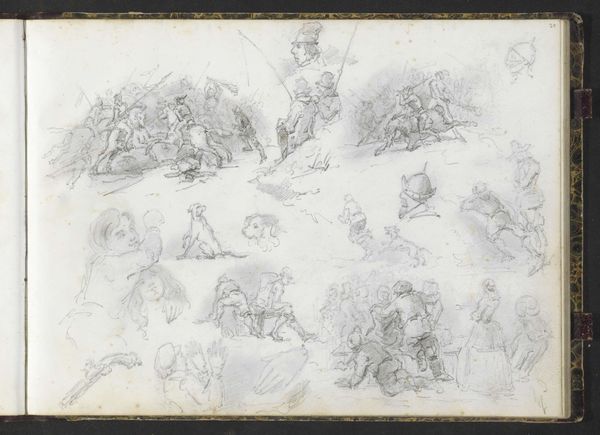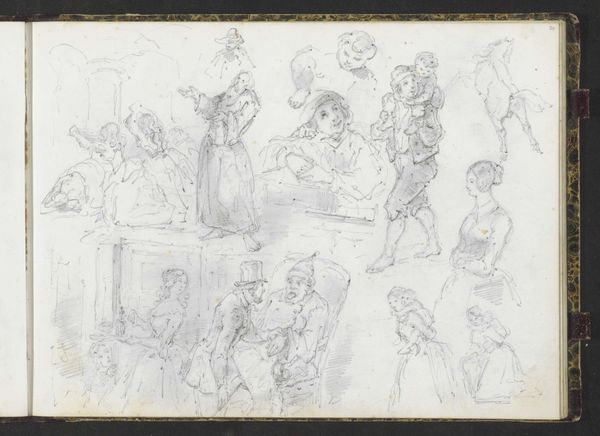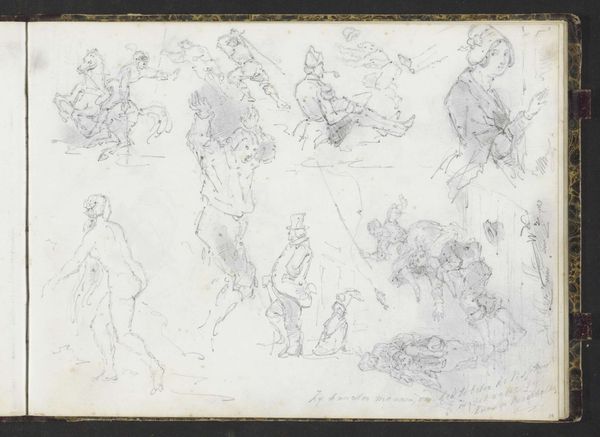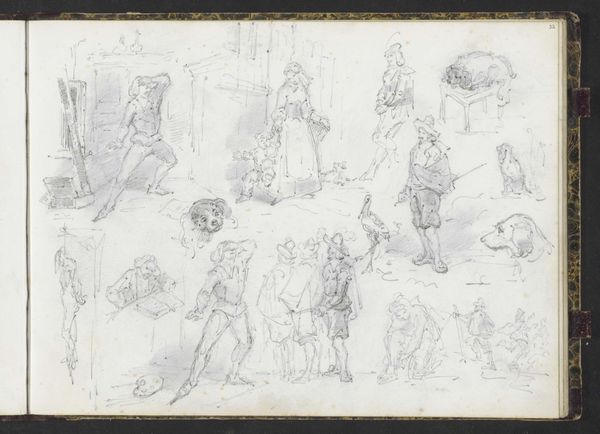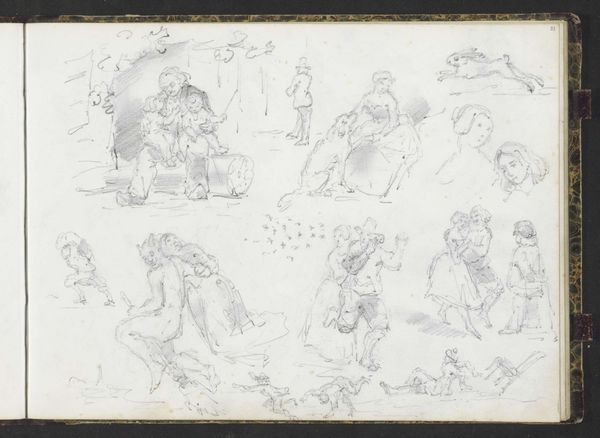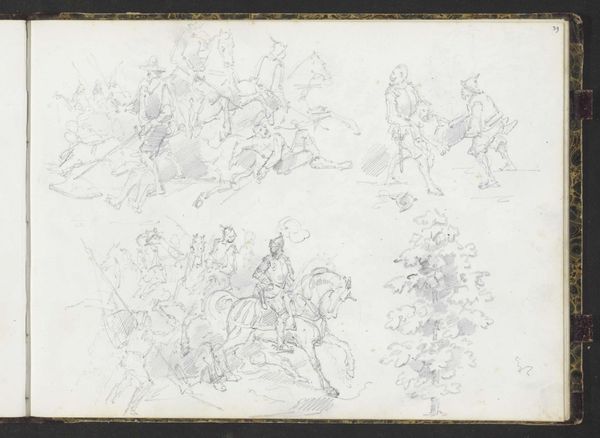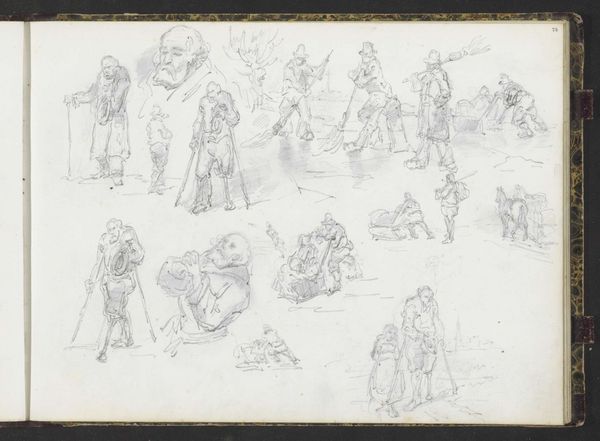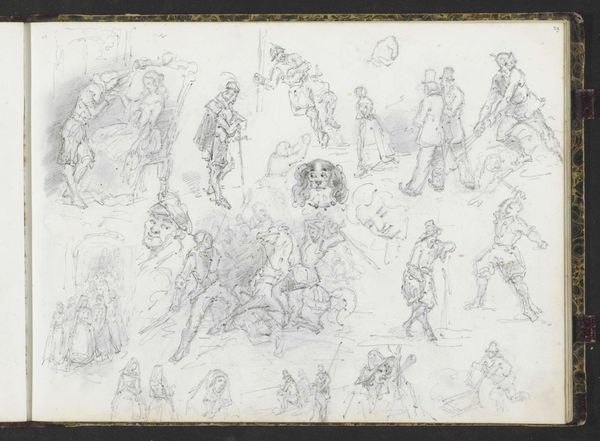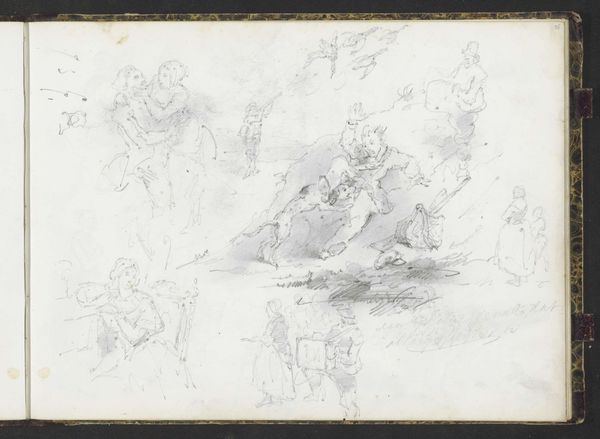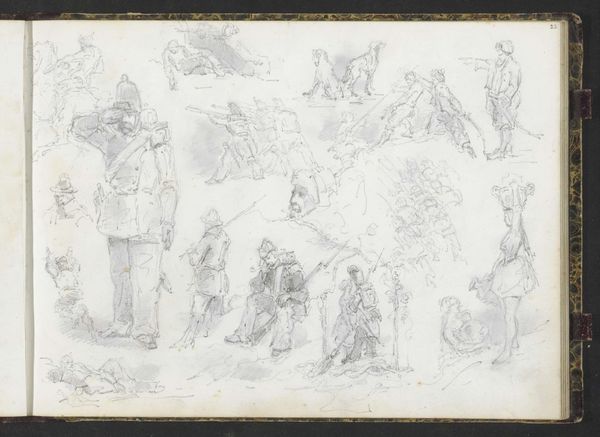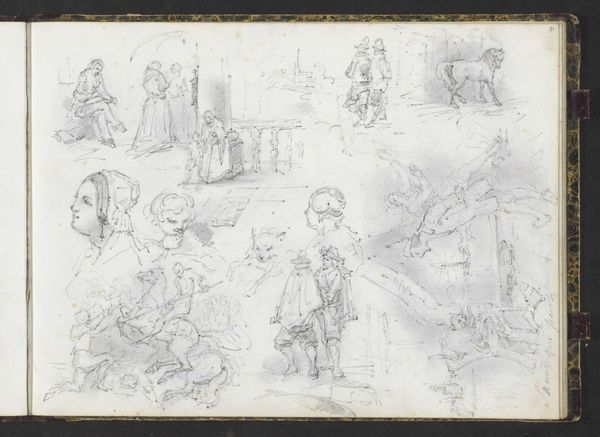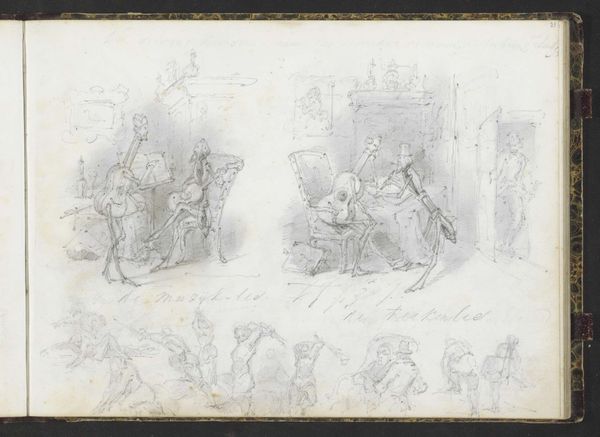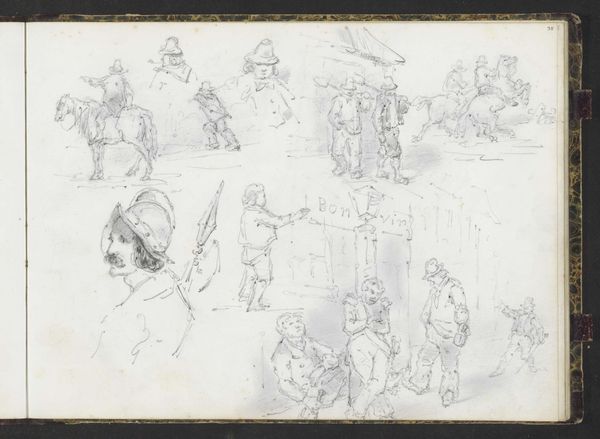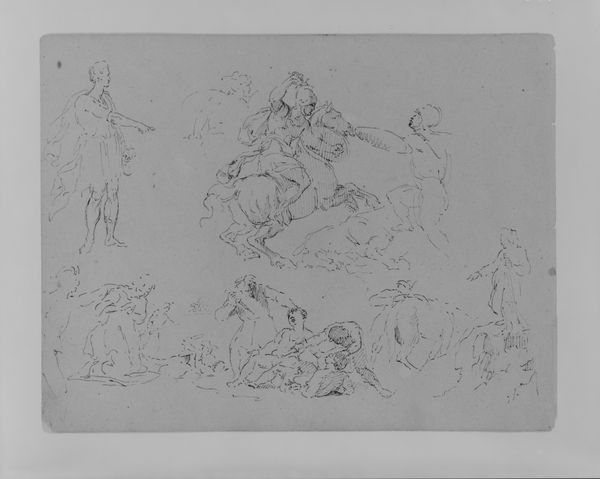
Copyright: Rijks Museum: Open Domain
Editor: We’re looking at Lambertus Lingeman’s "Studieblad met soldaten, een gevecht en liefdesparen", created sometime between 1839 and 1894. It's a sheet filled with pencil and ink drawings. It gives me the feeling of glimpsing into the artist's mind, seeing these half-formed scenes. What strikes you about its composition? Curator: The spatial arrangement presents a complex semiotic puzzle. The figures, rendered in varying degrees of completion, deny a singular focal point. Our gaze oscillates across the surface, guided by the shifting weights of the lines and the clustering of forms. How does the lack of finish affect your perception of depth? Editor: I suppose it flattens it, almost like they're all competing for space on the same plane. Does that speak to a particular style or artistic intent? Curator: Precisely. Lingeman seems less interested in illusionistic depth and more focused on the dynamic interplay of forms on the page. Consider how the varying line weights – the thick, confident strokes versus the delicate, tentative ones – create a visual rhythm. Does this rhythmic quality suggest a parallel to musical composition? Editor: I see what you mean. The figures almost feel like musical notes arranged on a staff, creating a sort of visual harmony, even in the chaos. I’d never thought about approaching it that way. Curator: It highlights the importance of purely visual relationships. Ultimately, Lingeman invites us to appreciate the drawing not as a representation of something external, but as an independent aesthetic object, a testament to the power of line and form. Editor: Thank you. Seeing it this way makes the sketch feel less like a discarded idea, and more like a finished work in its own right.
Comments
No comments
Be the first to comment and join the conversation on the ultimate creative platform.
